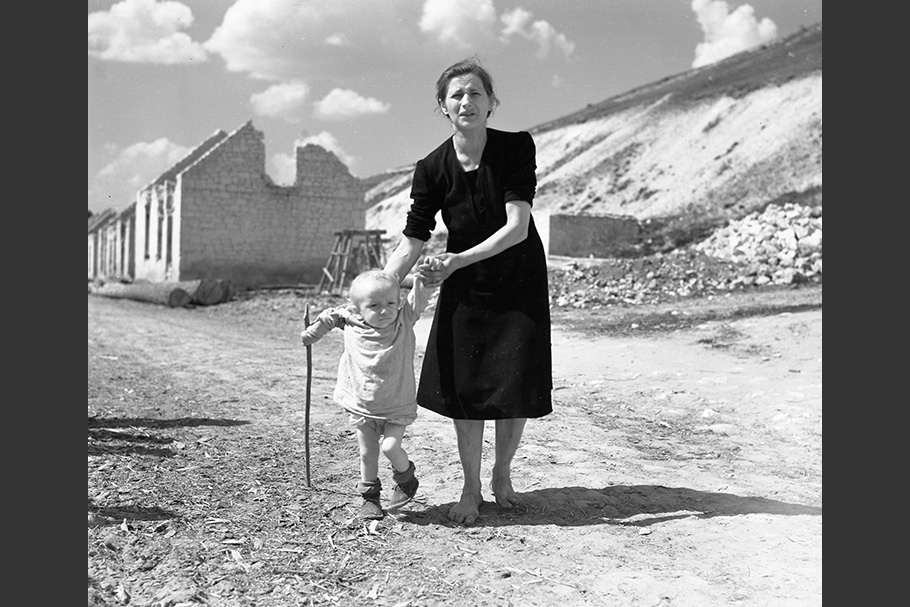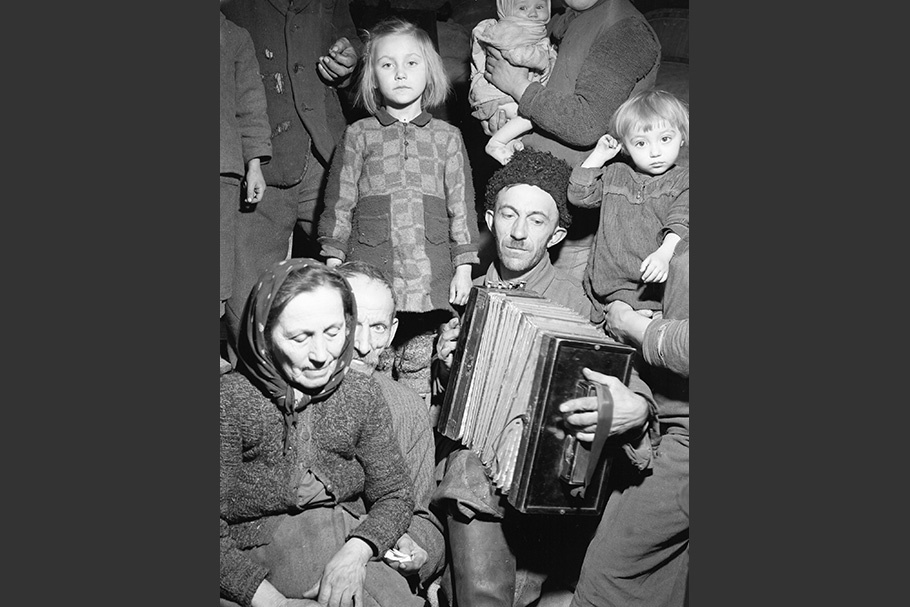19990301-vachon-mw02-collection-001

“Poland. Helena Borowska had a comfortable home with her husband and two young daughters, 11 and 8 years old, in the village of Claskow. It was a village of 300 houses. All the inhabitants were driven out by the Germans on their return in March 1945, they found only 10 houses left. Today most of the people are living in cellars of the destroyed buildings. Mr. Borowski is a tailor, but now he has no material to work with and none of the villagers could buy from him if he had. The farms around the village are non-productive for lack of all that is necessary to operate a farm. The people must live as best they can on a few potatoes and wild leaves. One year old Stanislaw has rickets and is very weak for lack of food. The other children of the village have poor teeth and skin. They all suffer from malnutrition.”
10 March 1947. UNRRA Photographs, Country Missions—Photographs, Poland. S-0800-0022, UNRRA/4479. United Nations Archives.
19990301-vachon-mw02-collection-002

“Poland. All their worldly goods are stacked inside and on the roof of a boxcar on a repatriation transport from Rudki, which is carrying them to a farm in Upper Silesia.”
May 1946. UNRRA Photographs, Country Missions—Photographs, Poland. S-0800-0022, UNRRA/4734. United Nations Archives.
John Vachon was born in 1914, in Minnesota. After graduation from St. Thomas College in the 1930s, he worked in the Farm Security Administration as a filing clerk. While maintaining the photo files there, his interest in photography grew, and he joined a group of photographers—including Walker Evans, Gordon Parks, and Dorothea Lange—who were recruited by Roy Stryker to document the conditions of the rural poor in America. From 1942 to 1943, Vachon also worked in the Office of War Information in Washington, D.C. In 1945, Vachon served in the United States Army. Starting in 1946, he photographed Poland for the United Nations Relief and Rehabilitation Administration. Shortly after, he was a staff photographer for Life magazine, and, for close to 25 years, at Look, until that publication folded in 1971. He won a Guggenheim Fellowship in 1973. Vachon died in 1974.
John Vachon
After serving in the United States Army in 1945, self-taught photographer John Vachon was sent to Poland to document the aftermath of World War II. His earlier work for the Farm Security Administration serving as a calling card, Vachon was dispatched by the Visual Information Office of the United Nations Relief and Rehabilitation Administration (UNRRA) to cover its relief efforts. Poland had been particularly affected by the war, with cities destroyed and a large segment of its population either decimated or forced into exile. Vachon’s vast body of work created there serves as a compassionate look at a devastated country recovering from years of destruction and Nazi occupation.
The photographs in this slideshow represent a small selection of images included in Vachon’s posthumous Moving Walls exhibit. For more on this body of work, see Poland, 1946: The Photographs and Letters of John Vachon (Washington, D.C.: Smithsonian Institution Press, 1995) or visit the United Nations Archives and Records Management Section, which houses the full archive of Vachon’s photographs from Poland that he created under the auspices of the UNRRA.
—Spring 1999